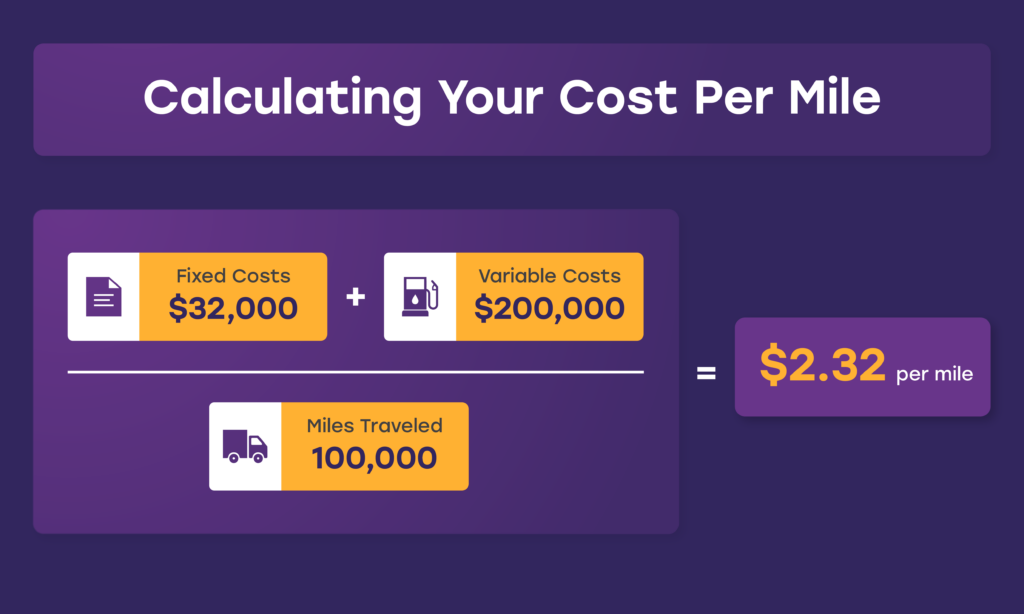March 19, 2024
Navigating fleet management costs is like solving a complex puzzle where every piece dynamically changes to impact the bottom line. Understanding how these pieces fit together is about more than keeping expenses low–it’s about optimizing operations to drive efficiency and stay competitive. This guide explores crucial factors of fleet management cost analysis and how emerging technologies are streamlining analysis to provide fleet managers with more accurate data and comprehensive insights to guide decision-making.
Fleet Management Costs 101: Total Cost of Ownership
A foundational concept of fleet management costs is the Total Cost of Ownership (TCO), which includes all expenses associated with acquiring, operating, and maintaining a fleet over its lifecycle. TCO provides a broad overview of investment costs and helps businesses make informed decisions about fleet spending. TCO can be broken down into two cost categories:
- Fixed Costs – These costs are established and remain constant regardless of how much a vehicle is used. Fixed costs include vehicle depreciation, insurance premiums, and license fees. Fixed costs are predictable, making them easier to budget for on an annual basis.
- Operating Costs – Unlike fixed costs, operating expenses vary with the level of vehicle use. These include fuel, maintenance, and repairs, which can fluctuate significantly based on driving habits, fuel prices, and unforeseen mechanical issues.
The distinction between fixed and operating costs is vital for effective fleet management, with variable operating costs, in particular, offering a significant opportunity for savings. Implementing strategies to reduce fuel consumption, extend maintenance intervals, and minimize repair costs can lead to substantial financial benefits in both the short- and long-term.
Calculating Fleet Efficiency: Understanding Cost-per-Mile
Fleet management efficiency requires both managing day-to-day operations and understanding the economics of fleet utilization. One critical metric for this is cost-per-mile, which offers a clear view of how TCO translates into everyday fleet operations and provides a tangible measure of fleet efficiency.
Cost-per-Mile Calculation
By dividing fixed and variable costs by the number of miles traveled, businesses can pinpoint the exact cost of operating their fleet per mile. This calculation helps assess the financial impact of fleet management decisions, from vehicle acquisition to maintenance strategies.
- Cost-per-Mile = Fixed Costs + Variable Costs / Miles Traveled

Understanding cost-per-mile is important for several reasons:
- Budgeting and Forecasting – Provides more accurate financial forecasting through a granular view of operational costs.
- Operational Decisions – Insights from cost-per-mile calculations can inform decisions about vehicle replacement, route optimization, and fuel management, directly affecting the fleet’s bottom line.
- Cost Reduction – Identifying opportunities to lower the cost-per-mile can lead to significant savings, especially when applied across a large fleet. Strategies may include investing in more fuel-efficient vehicles, optimizing routes to reduce miles traveled, and improving preventative maintenance to avoid costly repairs.
Grasping the nuances of cost-per-mile also sets the stage for a more comprehensive fleet management cost analysis, where every decision is an opportunity to enhance efficiency and drive down costs. This analysis illuminates paths to optimization, turning data into actionable insights for strategic fleet management.
Fleet Management Cost Analysis: Guiding Strategic Decisions
Fleet management cost analysis harnesses TCO and cost-per-mile metrics to guide strategic decision-making to enhance fleet efficiency and increase operational savings. Detailed cost analysis can be leveraged to support critical strategic fleet decisions, including:
- Vehicle Replacement – Determine the right time for vehicle replacement by comparing fleet cost-per-mile trends against industry standards. This ensures vehicles are replaced at optimal intervals, creating a balance between operational efficiency and responsible resource management.
- Maintenance Strategy – By examining maintenance and operational costs, businesses can shift towards more preventive maintenance strategies. This proactive approach helps avoid costly downtimes in the event of a breakdown and extends vehicle lifespans, contributing to long-term cost savings.
- Buy vs. Lease vs. Rent – Detailed cost analysis can aid in determining the best option for acquiring new vehicles for a fleet. This decision hinges on financial assessments and operational needs, guiding companies toward the most cost-effective procurement strategy.
In harnessing the power of fleet management cost analysis, businesses unlock critical insights into efficiency and savings. Emerging technologies pave the way for even deeper understanding and optimization, setting the stage for a new era of data-driven fleet management.
Leveraging Technology for Fleet Efficiency
Understanding and analyzing fleet management costs are crucial, but advanced technology solutions help transform this data into actionable insights. Tools like fleet management software, ELDs, routing optimization tools, and telematics enhance data accuracy and operational visibility, driving smarter, cost-effective decisions.
These advancements offer a competitive edge, ensuring businesses not only meet but exceed their operational and financial goals. For a streamlined approach to embracing these technologies and optimizing your fleet, Omnitracs offers the expertise and solutions you need.
Discover how Omnitracs can elevate your fleet management—contact us today.